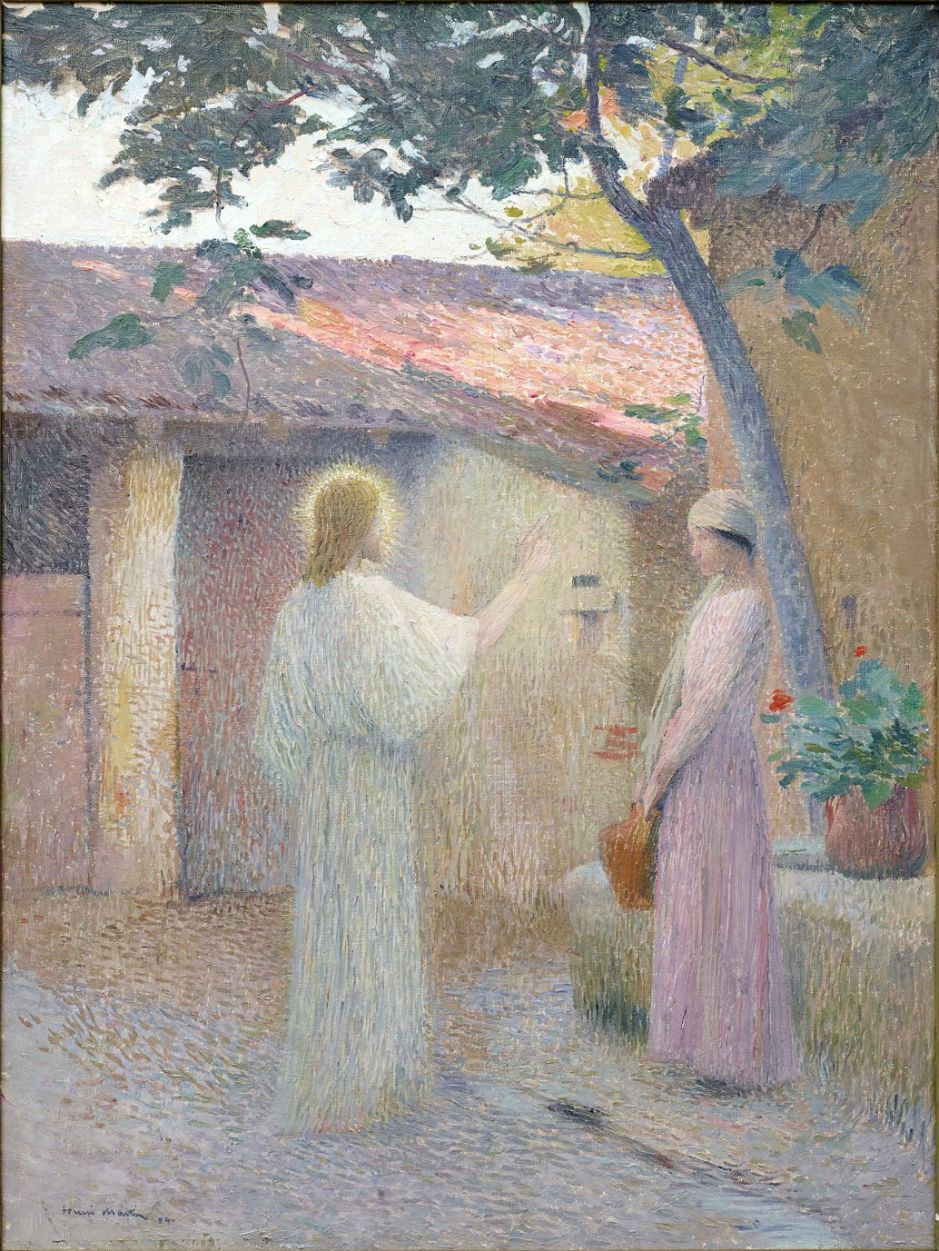If you visit public buildings in Paris, and several of the provincial art galleries around the country, you may stumble across the remarkable paintings of Henri-Jean Guillaume Martin, normally simply known as Henri Martin (1860–1943). A few have made their way overseas, but his wonderful Post-Impressionist paintings remain largely confined to his native country. Let me show you why.
He was born in Toulouse, France, and in 1877 started his training at the École des Beaux-Arts in that city. When he won first prize at the end of the course, he was awarded a bursary to support him in Paris from 1879, working in the studio of one of the last great history painters, Jean-Paul Laurens. From 1881, he painted mainly history paintings of classical subjects, and was most influenced by poetic themes, including Dante’s Divine Comedy. The first painting of his to be exhibited in the Salon was accepted in 1883.
To complete his apprenticeship, in 1885 he travelled to Italy, where he was most influenced by Giotto and Masaccio. On his return to Paris, he experimented with Divisionist (‘pointillist’) technique, and in 1889 was awarded his first gold medal in the Salon. The successful painting used Divisionist methods, and appears to have been the first such painting to achieve recognition in the Salon, although as might be expected its reception was mixed.
Martin’s version of Divisionism was different from Seurat’s, in that he painted less mechanically, using more spontaneous short marks of the brush to construct form from separated parallel strokes. Perhaps as a result of this, Martin’s name is usually omitted from lists of Neo-Impressionists and Post-Impressionists.

Martin’s wife modelled for his portrait of The Poet Clémence Isaure (c 1890). Not well known beyond Toulouse, Isaure is a semi-legendary character claimed to have lived during the latter half of the 1400s. She is attributed with founding or restoring the local Academy of the Floral Games, which are thought to be the most ancient literary institution in the west. However those games claim to have been founded in 1323, more than a century earlier than her purported life.
His style here is in transition from his early realism to his mature Divisionism.

He became more overtly Symbolist at that time, too, and in 1892 exhibited with the ‘Rose Cross’ salon, which was led by “Sâr” Joséphin Péladan (1859-1918). His Man Between Vice and Virtue (1892) expresses his Symbolism in distinctly Post-Impressionist style, with his own version of Divisionism. It is also unusual for its very realist depiction of the man’s body.

More typical of his painting style at this time, Christ and the Samaritan Woman (1894) uses fine brushstrokes rather than the dots of ‘pointillisme’ to build colour and form, and in places those strokes have become organised in the way that Vincent van Gogh’s rather coarser strokes did. Martin continued to paint religious and other narrative works well into the twentieth century – another distinction from the mainstream Neo- and Post-Impressionists.

With shorter brushstrokes and more rustic subjects, such as his Shepherd Returning His Sheep (1894), his paintings could be mistaken for Pissarro’s more Divisionist works from the same period, but here Martin also uses longer strokes to form the texture of the wooden pillars.

He also continued to explore Symbolist themes, as with the visionary angel in his Charity (1895).

His bold use of colour paralleled the paintings of Théo van Rysselberghe, as in Martin’s Orpheus in a Wood (1895). However, Martin did not base himself in Provence, but further to the north and west.

In the final years of the 1800s, as a result of his facture, his paintings developed a distinctive texture, as seen in his Goatherd in Front of an Old House in Labastide (c 1890-1900).

In areas he applied small dots, typical of the Divisionists, but in others his brushstrokes merged into larger, smoother passages, as in his Couple in Conversation in Front of the Farm (c 1890-1900).

He continued to explore the momentary effects of light, as in his The Green Valley at Dawn (c 1890-1900).

Serenity, or The Sacred Wood, (1899) is based on a passage from Book 6 of Virgil’s Aeneid, previously a popular source for narrative painting.

With its remarkable bursts of colour in the trees, Poets in the Sacred Wood shows two bards, probably Dante and Virgil, in one of Martin’s favourite imaginary places.

Other paintings of his, such as Summer, could easily have been part of Pissarro’s huge series depicting the countryside around Éragny, perhaps.

La Tonelle in Summer is another good example of his mature Divisionist style.
The next and final article will show his work during the twentieth century.
Reference
Wikipedia (in French).

